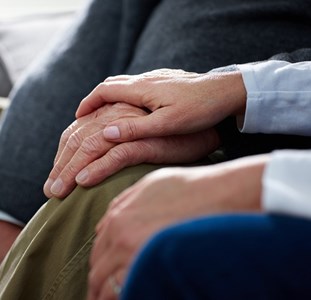The recommendations are made today (18 October 2023) in NICE’s updated guideline on stroke rehabilitation in adults.
The guideline says that people who have had a stroke should be offered, needs-based rehabilitation for at least 3 hours a day on at least 5 days of the week covering a range of multidisciplinary therapy including physiotherapy, occupational therapy and speech and language therapy.
This is an increase in rehabilitation compared with NICE’s original guideline published in 2013.
The evidence reviewed by the independent committee for the update showed more intensive rehabilitation improved quality of life and activities of daily living. They also heard from people recovering from stroke, and their families and carers, who felt strongly that more intensive rehabilitation would be useful in helping them to recover faster.
Professor Jonathan Benger, Chief Medical Officer at NICE, said:
“We recognise the challenges the system faces in delivering these recommendations, not least the problems inherent in increasing service capacity and staff. We also know current practice is inconsistent, even when it comes to implementing our previous recommendations.
“But equally it shouldn’t be underestimated how important it is for people who have been left with disabilities following a stroke to be given the opportunity to benefit from the intensity and duration of rehabilitation therapies outlined in this updated guideline.
“By focusing on what matters most, we need to find ways to enable people who have had a stroke to access the level of rehabilitation that supports their recovery and meets their long-term needs and goals.”
Jon Brown, director of strategic partnerships, Barnardo’s and chair of the guideline committee, said:
"The impacts of stroke are significant and this updated guideline provides a comprehensive, current, evidence-led synthesis of best practice in stroke rehabilitation. The guideline committee comprised an impressive mix of clinical and lived experience and this product of the committee's work will make a significant contribution to improving outcomes for stroke survivors."
Dr Maeva May, associate director for policy and research at the Stroke Association, said:
“We warmly welcome today’s announcement that NICE is recommending an increase in rehabilitation therapies for people who are recovering from stroke. Sadly, stroke is still a leading cause of adult disability and it has wide-ranging impacts so it’s vital that every stroke survivor gets the support they need to give them the best chance of recovery.
“Research shows that frequent and more intense rehabilitation leads to better recovery following a stroke but many stroke survivors only receive a fraction of what this guideline recommends, leaving many without support and limiting their improvement post-stroke.
“Every stroke is different and so is every recovery, so it’s important that stroke survivors can access person-centred support for as long as they need it, so they can regain their independence and rebuild their lives after stroke.”
Although stroke is one of the biggest causes of death in the UK, thanks to improvements in organised stroke care and new acute treatments, most people survive a first stroke. It is estimated that there are around 85,000 strokes every year in England, and around 1 million stroke survivors, many of who are living with its long-term effects (1).
Stroke care starts immediately after the onset of stroke symptoms. Most acute care is delivered within stroke units as part of organised stroke services.
Post-acute care can be delivered in secondary or primary care, often by specialist multidisciplinary teams working across different organisations. Their aim is to deliver rehabilitation to help people maximise function, minimise their pain and distress, and enable them to live as independently as possible in their usual setting.
In addition to the new recommendations on the intensity of stroke rehabilitation, the updated guideline also makes new recommendations in several other areas including telerehabilitation (2), the assessment of visual and hearing impairments and measuring fatigue.
References
1 Stroke Association
2 Telerehabilitation is a blanket term applied to approaches that employ an ever-expanding range of technologies, connecting patient and therapist in real time via any device, or through computer-based interventions that are remotely monitored and adapted offline by a therapist, or a combination of both.
